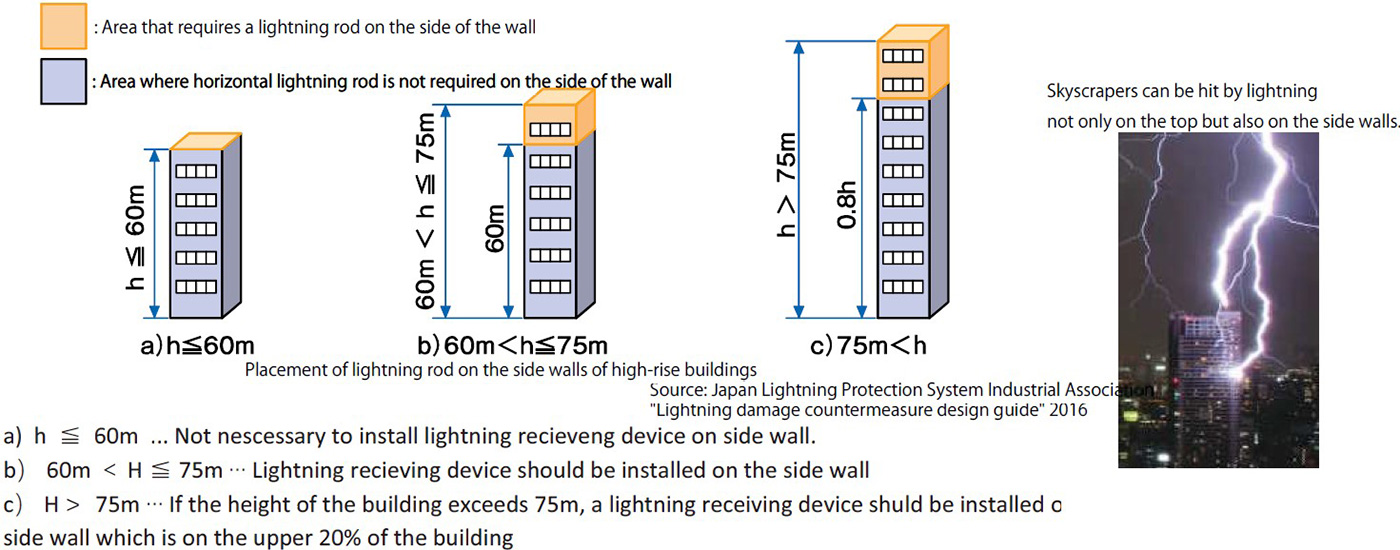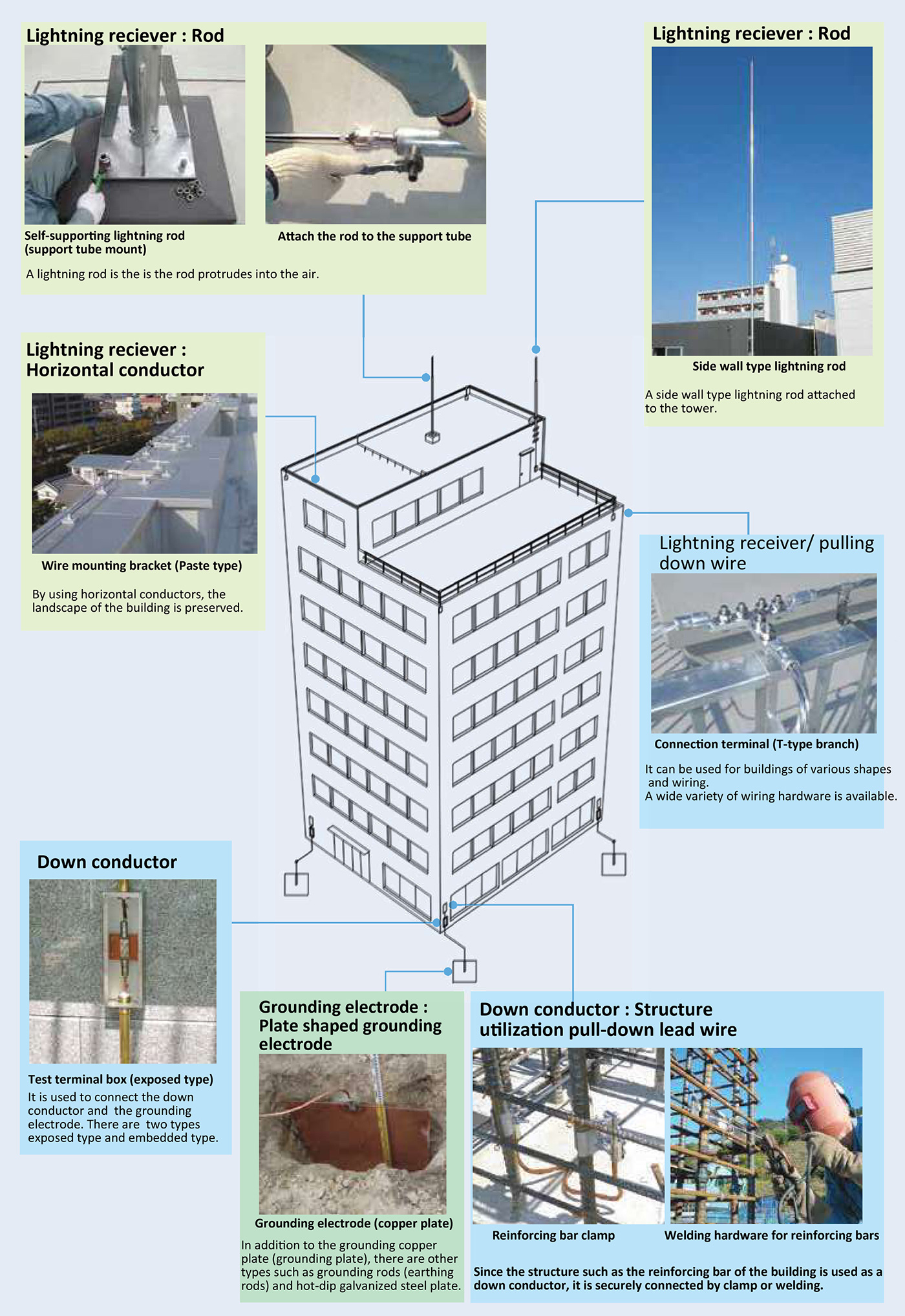JIS Z 9290-3:2019 [Physical damage to buildings, etc. and danger to human life], which defines procedures for protecting physical damage to buildings, etc. and human life from lightning strikes, consists of an “external lightning protection system” and an “internal lightning protection system”.
An external LPS is a system that reliably captures approaching lightning strikes and safely discharges them to the ground in order to prevent physical damage to the building itself, as well as to life and its contents. Depending on the importance of the building or equipment, the protection class is determined based on JIS Z 9290-3, and the external LPS is designed.
Considering the importance of the building, the density of lightning strikes in the area and the location conditions, the decision is made in consultation with the client and designer.
Internal LPS is a lightning equipotential bonding and isolation (separation distance) from external LPS to reduce dangerous spark discharge and electromagnetic effects by lightning.
To prevent the generation of overvoltage that may cause electric shock or fire, connect the external LPS to other metal parts directly by bonding or indirectly by using SPD.
Perform magnetic shielding and examine the wiring route.
The lightning current parameters (Lightning Impulse current peak value) for direct lightning strikes specified in IEC62305-1-2010 are classified into four levels namely Lightning Protection Level (LPL) I to IV. In addition, lightning current parameters such as the maximum current peak value and the minimum current peak value of the lightning current are defined according to each level.

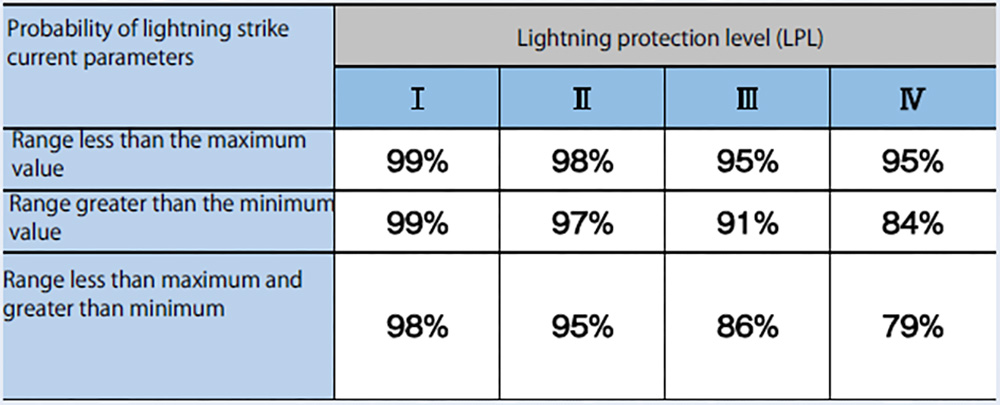
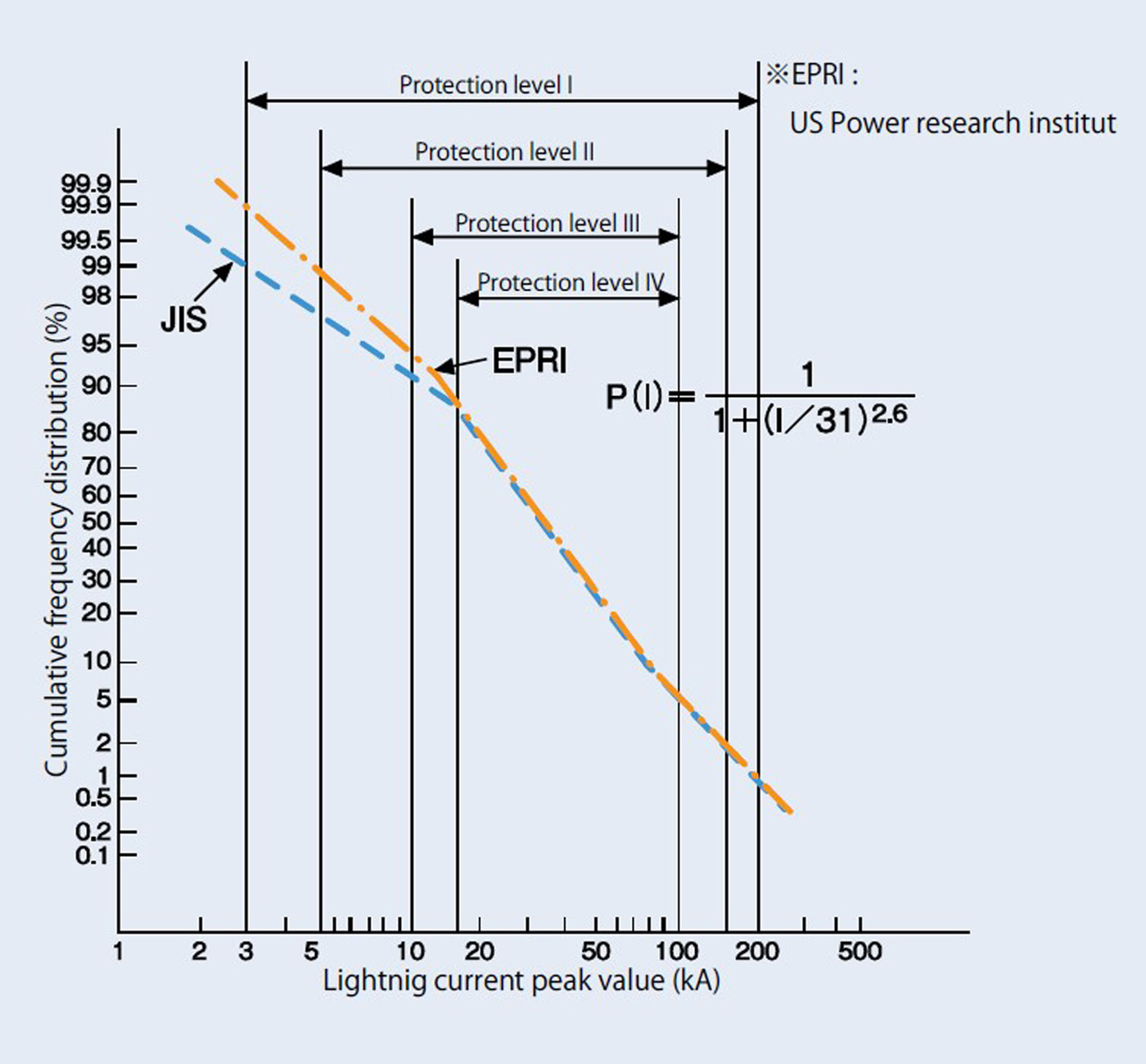
The range of protection levels according to IEC 62305-1
Source: “Lightning and the Advanced Information Society,” Institute of Electrical Equipment and Components Engineers. Added to Figure 1.4.2 in 1999.
In order to design a lightning protection system (LPS) which meets the requirements of LPS class in accordance with IEC 62305-2 (EN 62305-2), the following methods may be used individually or in combination:
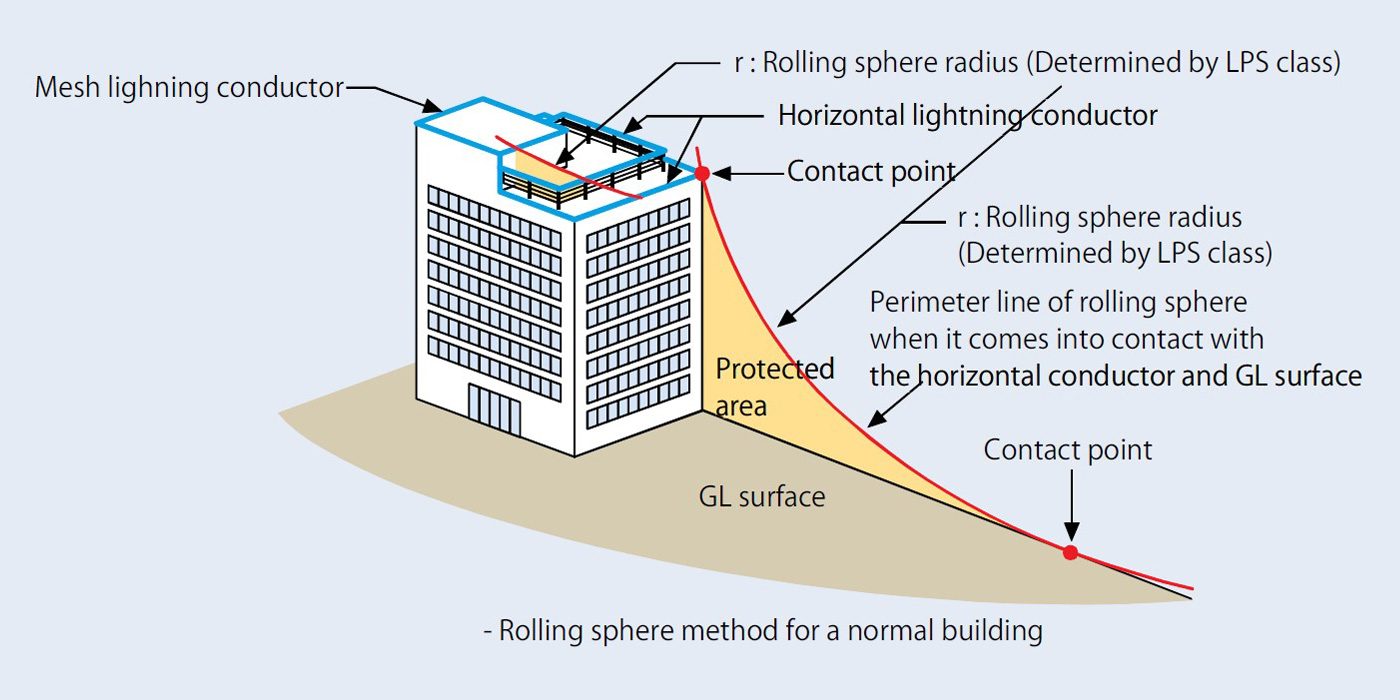
With the increase in high-rise buildings, IEC 62305-3:2010 stipulates that a lightning receiving area should be ensured on the side wall that is on the upper 20% height of a building which exceeds 60 m in height.
